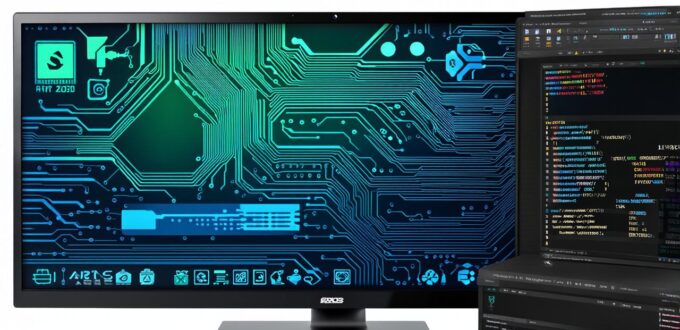Introduction
As software developers, it is essential to understand the definitions of hardware and software to create efficient, effective, and secure systems. In this article, we will explore the fundamental concepts of hardware and software and their relationship with each other. We will also delve into the differences between the two and how they impact the development process.
What is Hardware?
Hardware refers to the physical components that make up a computer system or device. It includes the central processing unit (CPU), memory, storage devices, input/output (I/O) devices, and other peripherals such as keyboards, mice, monitors, and printers. Hardware is responsible for executing instructions written in software programs.
What is Software?
Software refers to the set of instructions that tell the hardware what to do. It consists of programs, applications, operating systems, and other types of software that enable users to perform specific tasks on a computer system or device. Software can be customized, modified, or created from scratch to meet specific needs and requirements.
The Relationship between Hardware and Software
Hardware and software have a symbiotic relationship that is critical for the efficient and effective functioning of a computer system. The hardware provides the physical components and infrastructure needed to execute software programs, while the software dictates how the hardware operates and what tasks it performs. Without one, the other cannot function properly.
The Role of Hardware in Software Development
Hardware plays a crucial role in software development as it determines the performance and capabilities of the system. Developers must consider the hardware requirements when designing software programs to ensure that they run efficiently and effectively on different types of systems.
The Role of Software in Hardware Development
Software also plays a significant role in hardware development as it determines how the hardware operates and what tasks it performs. Developers must create firmware and device drivers that enable the hardware components to communicate with each other and perform specific functions.
The Definitions of Hardware and Software in Practice
In practice, the definitions of hardware and software are often blurred as they work together seamlessly to create a functional system. However, there are some key differences between hardware and software that distinguish them from each other.
The Impact of Hardware and Software Definitions on the Development Process
Understanding the definitions of hardware and software is crucial for the efficient and effective development process. Developers must consider the hardware requirements when designing software programs to ensure that they run efficiently and effectively on different types of systems.
The Importance of Hardware and Software Compatibility
Hardware and software compatibility is critical for the efficient and effective functioning of a computer system. Developers must consider the hardware and software requirements when designing software programs to ensure that they run efficiently and effectively on different types of systems.

The Role of Hardware and Software in Cybersecurity
Hardware and software play crucial roles in cybersecurity as they determine the security features and vulnerabilities of a computer system or device. Developers must consider the hardware and software requirements when designing secure systems to ensure that they are resistant to cyber threats such as malware, viruses, and hacking attempts.
Conclusion
In conclusion, understanding the definitions of hardware and software is critical for the efficient and effective development process. Developers must consider the hardware requirements when designing software programs to ensure that they run efficiently and effectively on different types of systems. Hardware and software compatibility is essential for the efficient and effective functioning of a computer system, and developers must consider security features and vulnerabilities when designing secure systems.
